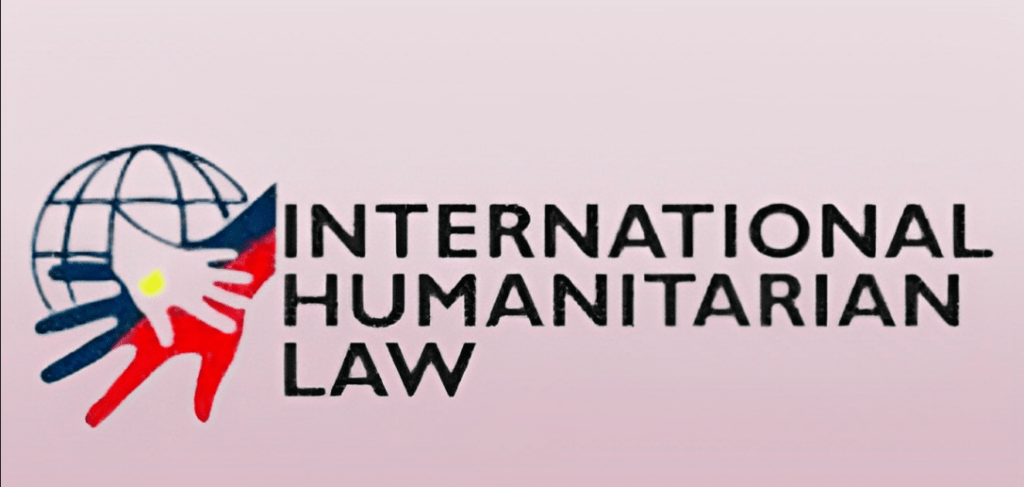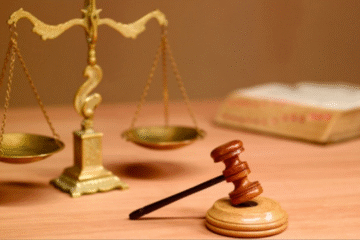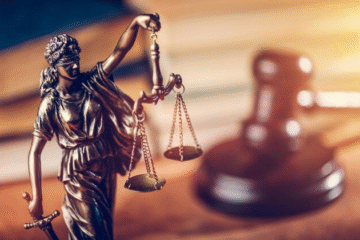
This article is written by Kanika Arora of 4th Semester of Delhi Metropolitan Education
Abstract
Armed hostilities have been waged against El Salvador and Nicaragua governments since the early 1980s by groups hostile to both governments. El Salvador and Nicaragua governments have the authority to employ military force to protect themselves from a violent takeover under their internal and international laws. International humanitarian law, which governs applicable laws and customs of war, imposes normative restrictions on how the combatants in these wars may conduct hostilities.
This article’s goal is to identify and evaluate the international humanitarian law frameworks that apply to these current conflicts. The hostilities in El Salvador and Nicaragua need to be properly described since the humanitarian law regulations regulating an international armed conflict differ dramatically from those governing a non-international conflict.
Keywords: Armed hostilities, customs of war, humanitarian law
Introduction
To safeguard the interests of those harmed by armed conflict is the goal behind the development of international humanitarian law. Humanitarian laws were made possible by cases in which persons who suffered a great deal throughout world wars had no link to or active involvement in the fighting. This article explores several agreements made to safeguard the concerns and interests of those involved in the war. It also talks about the causes of the conflict. In determining the responsibilities of the concerned state, it considers the function of the international criminal tribunal. In several legal cases, the accused state has been punished by the international criminal tribunal for participating in armed wars, as discussed in this article.
Cause of the Dispute
The following are the causes of the armed conflict:
- Power Disparities
To keep up with the current trend, every nation aspired to be superior to others. They come up with various strategies to undermine the plans of their rivals. One of the examples is the accusations made by Americans that Russia attempted to interfere with the American presidential election. The superpower endeavors to annex tiny nations by armed war or diplomacy.
- Free trade and economic expansion
A strategy of armed conflicts has also been developed by the nation as a result of rapid economic growth and expanding free commerce. The nations typically use aggressive tactics to promote their goods abroad. The superpower’s expansion plans call for capturing all of the minor nations’ market share in important industries so that they can buy their goods. The ability to launch an armed uprising and swiftly conquer a nation’s territory always favors the nations with strong control over the markets of other nations.
Deprivation relative
The relative lack of equivalent authority within the nation may be the source of the armed conflict. Maintaining the current condition of affairs is important in the struggle for leadership or control. The situation will undoubtedly worsen if there
is any disruption of the status quo and any of the organizations begin a large-scale protest against the current regime or government.
particular types of political organization
The political groups of several nations attempt to annihilate the other nation through military conflict to seize the territory of sovereign states. The motivation underlying military wars is the ideology of a political group. Armed conflict is utilized as a tool to further political goals and win over uninformed voters.
The existence of a power monopoly and the relationship between internal aggressiveness and unity on the outside
If there is a power monopoly, the authoritarian government in no way allows for enough room for alternative groups or ideologies to thrive in the nation. It will undoubtedly result in a situation where there will be conflict on various levels. Additionally, it causes neighbours to express worry, which is known as external cohesion. An armed conflict results from the combination of internal aggressiveness and external cohesion.
Laws that Apply
Following are the 1949 Geneva Conventions and its supplemental protocol:
The First Geneva Convention
Following those enacted in 1864, 1906, and 1929, this treaty constitutes the fourth revision of the Geneva Conventions on the treatment of the injured and ill. There are 64 articles in it. In addition to protecting the injured and ill, this agreement also offers security to medical and religious patients, medical units, and medical transports. The distinguishing insignia are acknowledged by the convention as well. There are two annexes with draught agreements.
Geneva II Convention
The adoption of the Geneva Accord’s principle of marine warfare, this accord replaced the Hague Convention of 1907. It closely resembles the First Geneva Convention in both content and organization. It contains 63 articles that are especially relevant to the maritime conflict. It features one annex that includes a sample identity card for professionals in medicine and religion.
Geneva Convention III
The 1929 prisoner of war convention was replaced by this one. Compared to the convention of 1929, which only had 97 articles, this convention has 143. In comparison to the previous two conventions, the type of person covered by the status of prisoner of war has been expanded to include a wider range of individuals. More specific definitions and classifications of the circumstances and setting of captivity are made. It has made explicit reference to the types of support, compensation, and financial relief provided to those who hold the status of state prisoners. Additionally, it has categorically described the legal actions taken against them. The pact specifies a rule on prompt repatriation and releases following the cessation of active hostilities.
Geneva Convention, fourth
The 1949 Geneva Convention, which exclusively applied to combatants, was adopted. When putting these conventions into practice, the World War II events were taken into account. It has enlarged horizons and given the war-suffering citizens various forms of relief. There are 159 articles in it. Additionally, it contains a specific division that guards the populace generally during conflicts. The protocol that outlined relief for those who had been subjected to hostilities was amended to include this.
The Geneva Conventions’ supplemental protocols
Two supplementary protocols to the Geneva Accords were approved in 1977 during an international diplomatic conference to safeguard the victims of domestic and international armed conflict. Many nations have ratified it. These protocols also apply to nations that have signed the Geneva Conventions but have not ratified the extra protocols. The convention provides provisions for the safety of journalists as well as civilians, women, and children. Additionally, it is stated that international non-governmental organizations, such as the International Red Cross Society, may offer assistance if the parties to the dispute agree. It is impossible to attack the dams, dikes, and sites of worship. It is forbidden to employ weapons that cause extensive and persistent harm or excessive or unnecessary injuries. It is not permitted to hire anyone under the age of 15. Additionally, it forbade the indiscriminate destruction of persons and necessities like food and water. Using the Geneva Convention’s emblems to mislead the enemy state or engage in any other type of treachery is a war crime.
Instances of Armed War
Syria’s Civil War
2011 saw demonstrations in Syria calling for the release of political prisoners and political reform. Despite the citizens’ peaceful protest, the Syrian government troops used actual weapons and ammunition to put an end to it. By then, the protest had already spread to many areas of the nation. The security personnel used various forms of torture, beatings, and mistreatment on the protestors. To repress the protestors, the government has employed military tanks and other lethal tools from previous conflicts. This has further heightened the situation, and other nations like Saudi Arabia and Lebanon have begun to back the protesters.
The UN Security Council has taken the situation seriously and has denounced the government forces’ use of violence. The European Council has banned the export of Syrian oil, frozen Syria’s financial accounts in EU member states, and barred some Syrian officials from traveling.
In the early stages of the protests, the Syrian government attempted to mediate with the demonstrators by ceasing hostilities by its forces, but as a result, the massive demonstration became a large form, making all government attempts futile. Syria has also encouraged outside parties to monitor its actions and carry out the plan put forth by the League of Arab Emirates.
The United Nations Security Council approved resolution 2042, approving the United Nations Supervision Mission in the Syrian Arab Republic, to lessen violence. The mission was abandoned after a while because of intensification.
After some time, certain soldiers and security personnel in Syria openly voiced their disdain for the country’s governing forces and their methods of operation. As a result, the Free Syrian Army was created. At the local level, the Free Syrian Army began mobilizing additional armies of a similar nature, and a full-fledged military struggle broke out in Syria.
Prosecutor vs. Slobodan Milosevic
In this instance, the international criminal tribunal for the former Yugoslavia continued to develop the meaning of the armed conflict. After an amicus curiae motion was submitted before the court saying that no such conflict existed before 24th March 1999, the court specifically considered an armed conflict to exist, as opposed to terrorism or simple internal disturbance. It was contended that under Article 3 of the International Criminal Tribunal for the former Yugoslavia’s statute, there was no case to answer for war crimes. Additionally, it was argued that there had never been a protracted armed conflict before March 24, 1999. It was merely a case of banditry, an unplanned, transient revolt, or terrorist activity.
The trial chamber has emphasized the standard they established to identify an armed conflict. The hostile country’s modalities and techniques were examined by the court, which concluded that there was no evidence of non-armed combat there. References to internal armed conflict were made by decisions taken by the other chambers, which took into account pertinent criteria including the mobilisation of government forces and the frequency of attacks.
Italy vs. Abdelaziz
The Italian cassation court had to make a distinction between this case and other national liberation movements to determine what constitutes terrorism. Previously, the Italian legal system had divided up the conflict into national war movements, guerilla wars, and wars against oppression. The government protected those fighting in these conflicts, and they were spared from legal repercussions.
The foreign nationals accused of encouraging people to join violent organizations all across the world were the defendants in this case. To the Islamic terrorist group, they sent several people. According to the criminal code of Italy, Section 270, they were charged. If supporting paramilitary activity in the Middle East can be viewed as promoting and engaging in terrorism, that was the question put before the court.
The accused was convicted by the Supreme Court. According to the 1999 International Convention for the Suppression of the Financing of Terrorism, the court applied the term “terrorism” in its broadest sense.
Conclusion
International humanitarian law should be made more flexible in its application. In the recent past, there have been several cases of ethniccleansing and internal armed strife. The culprits should receive severe punishment from the international criminal tribunal. The victims of the war need to receive the right kind of rehabilitation. For the prisoners of war to lead happy lives, they should be permitted to seek unique skill development. The international red cross society needs to expand its humanitarian efforts to help youngsters whose parents died in wartime receive an education. Globally, a massive campaign should be launched to reduce armed conflict. To set a precedent and serve as a deterrence for similar actions in the future, the international community should order the establishment, organization, or government that initiated any such armed conflict to make up for the losses suffered by innocent people. The Universal Declaration of Human Rights ought to be followed in letter and spirit because it has evolved into the Magna Carta of people’s human rights.
References
- Accessed July 14, 2023. https://digitalcommons.wcl.american.edu/cgi/viewcontent.cgi?article=1661&context=auilr.
- International Committee of the Red Cross. Accessed July 14, 2023. https://www.icrc.org/en/war-and-law/treaties-customary-law/geneva-conventions.
- ipleaders. Accessed July 14, 2023. https://blog.ipleaders.in/international-armed-conflict-international-humanitarian-law/#Introduction.




0 Comments